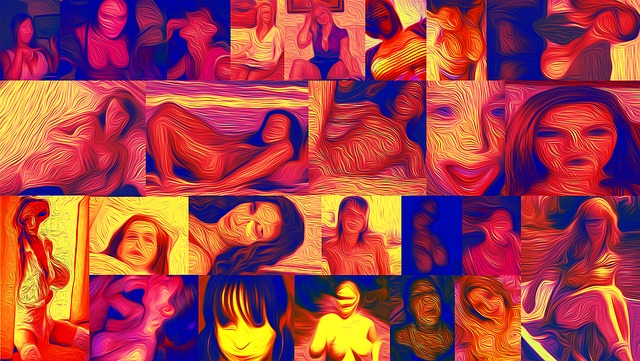
In her constitutive essay from 1989, “Pornography: On Morality and Politics,” Catharine MacKinnon censures the legal stance of pornography harshly and discusses how pornography is actually another form of women’s oppression. It is very unfortunate to note that nearly three decades later, MacKinnon’s claims appear to be more relevant than ever, as pornography has been growing and spreading concurrently with the progress of technology and the internet.
Yet, in spite of its gargantuan growth and permeation into mainstream culture, many contemporary women poets still denounce this phenomenon that commemorates male dominance in their poems. This essay will discuss and demonstrate how MacKinnon’s ideas and principles are still echoed in three poems of present-day women poets.
It is first important to mention that the legality of pornography is not a moot point in the three selected poems that will be discussed here; in fact, there are scarcely any poems in the last few decades that explore and examine the legal position of pornography at all, as far as I could find. The difficulty in uncovering such poetry is by itself evidence for the fusion and acceptance of pornography in Western society as a legitimate form of entertainment, let alone lawful. At least from this perspective, it seems that MacKinnon’s call for reform has not been heeded.
The first poem, by the poet Jamie R. Eddy, is called “www.BLINK.com” (2008), and as its name implies, it is related to the internet, and more accurately, it is about an internet pornography addiction of – not surprisingly – a man. The clearest notions from MacKinnon’s essay that reverberate in this poem are the violent nature of pornography and the increasingly growing compulsion of men to consume more and more humiliating and debasing materials against women. MacKinnon argues that “more and more violence has become necessary to keep the progressively desensitized consumer aroused” (200), which is quite a precise portrayal of the man, a pornography addict, in the poem.
The poem’s speaker begins by likening the man’s pornography addiction to the more familiar field of drug addiction: his “open eyes are like veins” and the pornographic images are “needles on screen” (1-2). She then describes the addict as “insatiable, he needs more” and that his habit is “a hunger he can’t disguise” (19-20). The speaker determines that the addict is “[c]onsumed by an illusion / overdosed in cyberspace” (25-6); as MacKinnon contends, the pornography consumer gradually necessitates more forcible contents for his arousal, until ultimately “like his hard drive, his soul was erased” (28). MacKinnon emphasizes that the violent degradation of women is an arousing element in pornography. She affirms that “[w]omen in pornography are turned on by being put down and feel pain as pleasure,” and that this degradation is “exactly what is sexually arousing to the male point of view in the pornography” (210-11) – principles that are evident in the poem. The speaker characterizes a pornography addict who is “thirsting for relief from pain” (3) and who is “devoured by poisonous sight” (10) – indications that he finds violence incredibly stimulating. She goes on to define the addict’s propensities as “honesty,” highlighting the authentic dark urges within him, and this honesty “bleeds pure violence” until finally “he is broken beyond repair” (23-4).
This poem, therefore, reflects the most sinister conceptions from MacKinnon’s essay: pornography’s inherent qualities of violence and humiliation against women and the increasing desire of male viewers to consume more violent and humiliating materials.
Whereas “www.BLINK.com” demonstrates the corrupting effects of pornography from a focalized masculine point of view, the poem “Skin” by Elizabeth Brotzman (2013) evinces the point of view of a woman who discovers her spouse’s pornographic habits. According to MacKinnon, who alludes to the feminist activist Andrea Dworkin, “What in the liberal view looks like love and romance looks a lot like hatred and torture to the feminist” (198), which highlights the feminist frustration due to the twisted perspective of liberal society that often romanticizes pornography and thus justifies it. “Skin” brings to light particularly this frustrated position of a female speaker who dejectedly finds her spouse’s pornographic collection and fruitlessly attempts to understand its attraction.
The poem’s speaker describes how she browses through “the photos” as she is genuinely “[t]rying to find what you [her spouse] find” (1-2); even though the speaker addresses her spouse, it is more likely that it is her solipsistic stream of consciousness narrating the glum experience. It does not seem to be the first time that the speaker tries in vain to understand the consumption of pornography, and in fact, it appears only to leave her more dispirited than before: she does not feel “the familiar ache” anymore but now she feels “numb” and “[l]eft behind” (9-11). While pornography is supposedly designed to give her some sort of relief – presumably society’s point of view – she finds “no release / only skin” (14-15); the skin is certainly not a symbol of love and romance but of the naked vulnerability of the woman, to which the speaker cannot agree no matter how hard she tries. As a woman, the speaker feels hurt herself because, as MacKinnon defines it, “the harm is absolutely selective and systematic” against the “members of the group women” (208). The speaker states that while she views her spouse’s pornography, her “mind just wanders / about the woman” (3-4), and later on, she reaffirms that the “only thing [she] can relate to” is the “woman on the screen” (12) – a woman like her whose eyes are “distant and resentful” (13) and with whom she emphasizes as a group member.
This poem focuses on the female point of view of the experience of watching pornography and is correlated almost perfectly with MacKinnon’s characterization of it – it does not look like love and romance to her, as society might represent it, but it is perceived as collective harm against women.
The last poem to be discussed is “A Pornography” by Paisley Rekdal (2007), an award-winning writer and professor at the University of Utah. In this delightfully cryptic poem, the speaker recalls an erotic experience in which a group of people watches a pornographic film in a hotel room. The poem is in two verses in reverse chronology – the speaker first narrates the experience after watching the film and then during. MacKinnon stresses that the harm of pornography is its “success in making the world a pornographic place” and “in constructing social reality” (204) – these ideas are manifested elegantly in the poem as the pornographic film blends with the speaker’s depicted reality.
The first verse of the poem is a portrayal of an enigmatic erotic event that is full of suggestive sexual acts of strangers in a hotel room, while the willingness of the participants to partake in it is at least somewhat questionable. The speaker describes how “[s]trangers pressed to other strangers” (2), whilst none are “giving into another and yet unwilling to leave the scene” (6); they are “pretending to sleep, actually sleeping” only to wake up and “slip a hand / over a shoulder, slide a finger / inside the waistband of a skirt” (8-11). It appears that what prompted these carnal deeds is a mysterious “firm, white shape / of an image slipped wholly into the mind” (16-7), and the source of this image is revealed immediately at the beginning of the second verse as “a film” (20), a pornographic one. The second verse divulges that the suggestive sexual acts in the first verse actually mimic softly the pornographic film that the strangers had watched together earlier with “its forced sounds / of lovemaking” (20-1) and its “music, the rocking, the sobbing” (31).
Thus, the pornographic film makes the real life of the strangers a pornographic place and constructs their social reality, just as MacKinnon argues. Other notions of MacKinnon that the poem imparts are pornography’s dehumanizing aspects of women who “exist for the end of male pleasure” (209) and who are excluded “from the substantive definition of personhood” (212). In the poem’s pornographic film, “[t]he man called the woman by parts of herself” (32), a clear dehumanizing expression of women, which is taken lightly by the watchers as “[s]ome laughed at this” (33) and even the speaker admits that she “must have been one of them” (34). Shortly thereafter, as in the film, the speaker herself begins referring to people as body parts: “Legs” (40), “waists” (41), “shoulders” and “necks” (42); again, pornography merges into reality and this time, with its dehumanizing factors. The poem hence exhibits quite palpably how pornography distortedly forms and shapes reality, in accordance with MacKinnon’s theoretical claims.
When Catharine MacKinnon’s essay was published in the late 1980s, pornography had been far less integrated and accessible than in today’s culture; yet, she still manages to refine and define pornography’s abusive and oppressive nature against women in ways that accurately reflect nowadays’ society in which pornography exists more profusely than ever before. It is not a surprise then that MacKinnon’s ideas are embodied within different poems of current women poets, as demonstrated here – the inherent violence and humiliation of women in pornography, the perverted public perception of pornography, and the amalgamation of pornography into reality.
The fact that today’s women poets convey the same messages as MacKinnon decades after the publication of her essay speaks volumes about its validity and veracity – and illustrates that perhaps it should constitute a basis for a fresh public debate about pornography.
MacKinnon, Catharine. 1989. “Pornography: On Morality and Politics.” Towards a Feminist Theory of State: 195-214.



